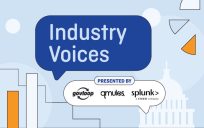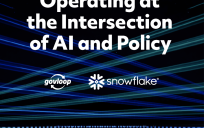The adoption of generative artificial intelligence (GenAI) in the public sector is quickly transforming not just how government agencies operate but also many employees’ tasks and activities. Sixteen states have already advanced executive branch activities, such as executive orders that require agencies to provide GenAI training for state government workers. The problem, according to new research, however, is that public sector employees are lagging behind their private-sector counterparts in both the use and understanding of GenAI.

Successful GenAI transformation requires public sector leaders to integrate GenAI into every process across government. “Just like we all had to learn how to use Google search and email 20 years ago,” says Clara Shih, CEO of Salesforce AI, “every employee today, in every department, has to learn how to use AI to fundamentally redefine their job.” But without consensus on how to best do this in government, public sector leaders might struggle to harness the productivity and efficiency gains of this new technology for themselves or help their employees connect GenAI to their roles.
The first step in guiding an organization through GenAI transformation is understanding how to use the technology itself. While GenAI can help employees complete tasks more quickly — with one Harvard Business School study finding workers completing some tasks 25% faster — it also can help leaders think more creatively and effectively. Rather than relying on GenAI as a basic query tool, public sector leaders should consider using GenAI as a thought partner.
For example, while many may be familiar with how to prompt a large language model (LLM) with a basic question, you can also use GenAI to support complex problem-solving, brainstorming, and strategic thinking. One way to do this is to use more advanced prompting styles that can get an LLM to challenge, improve, and push back on your point of view.
A basic prompt might involve making a simple request from an LLM and waiting for it to provide a response (e.g. “give me five effective ways to communicate the rollout of our new GenAI training within my department”). A more advanced prompting style that uses GenAI as a thought partner, on the other hand, can help unlock new ways to solve critical public sector problems.
Consider the following prompt: “My remote organization is eagerly adopting GenAI on its own, but we want to offer some formal training for our employees around how to safely and ethically use GenAI at work. I think there’s more of an advantage to rolling out training to the entire organization at once versus department by department. What are the pitfalls of an organization-wide rollout?”
When public sector leaders use GenAI as a thought partner, they are able to examine their own biases and assumptions, and gain valuable insights on alternative views that can strengthen their work and decision making. Yet while both public and private sector leaders increasingly rank GenAI as a priority for their organizations, 59% of leaders say they have limited or no confidence in their executive team’s proficiency in GenAI. According to Andrew Ng, one of Coursera’s co-founders, and instructor of one of Coursera’s fastest growing GenAI courses, “the most important thing a CEO needs to do is understand this technology. And the only way to understand it is to use it.” This is especially true for public sector leaders across the country who are under pressure to introduce new GenAI training for their employees.
So while we can expect every state to create its own GenAI policy, mandate, or framework in the months and years ahead, it behooves public sector leaders to begin harnessing this technology for their organizations right now. And perhaps the first step in doing that is getting themselves — and their employees — more comfortable using GenAI as a thought partner.
Jonathan Hasak is a workforce development expert. He helps lead the public sector work in North America for Coursera, one of the world’s largest online training providers, where he creates government partnerships and develops strategies that enable public sector agencies to rapidly reskill and upskill their workforce.
Jonathan began his career working as a public school teacher and administrator in the Los Angeles, Oakland, and Boston public schools before transitioning to workforce development. He oversaw youth programs in the Metro North region of Massachusetts and helped lead public policy and government affairs at Year Up, a national job training organization, before joining Coursera.
Jonathan earned his MBA at the University of California, Berkeley, Haas School of Business, his M.A. in Education Policy & Management at Harvard’s Graduate School of Education, and his B.A. from Bard College in Literature and Creative Writing. He has written and published dozens of articles and op-eds and his work has appeared in media outlets such as The Washington Post, Stanford Social Innovation Review, Forbes, and EdSurge.





Leave a Reply
You must be logged in to post a comment.